The American Astronomical Society (AAS) meeting is the largest annual gathering of astronomers and astrophysicists. It’s not known for drama. But this year, the buzz in the room wasn’t too different from the nervous energy during an awards night. That’s because there is a competition underway for what will be NASA’s next big space telescope—the next Hubble or James Webb. There are four nominees, and eventually there will be a winner. Science Friday assistant producer Katie Feather reported on the event from the not-quite red carpet. Learn more about the nominees below!
NASA Jet Propulsion Lab
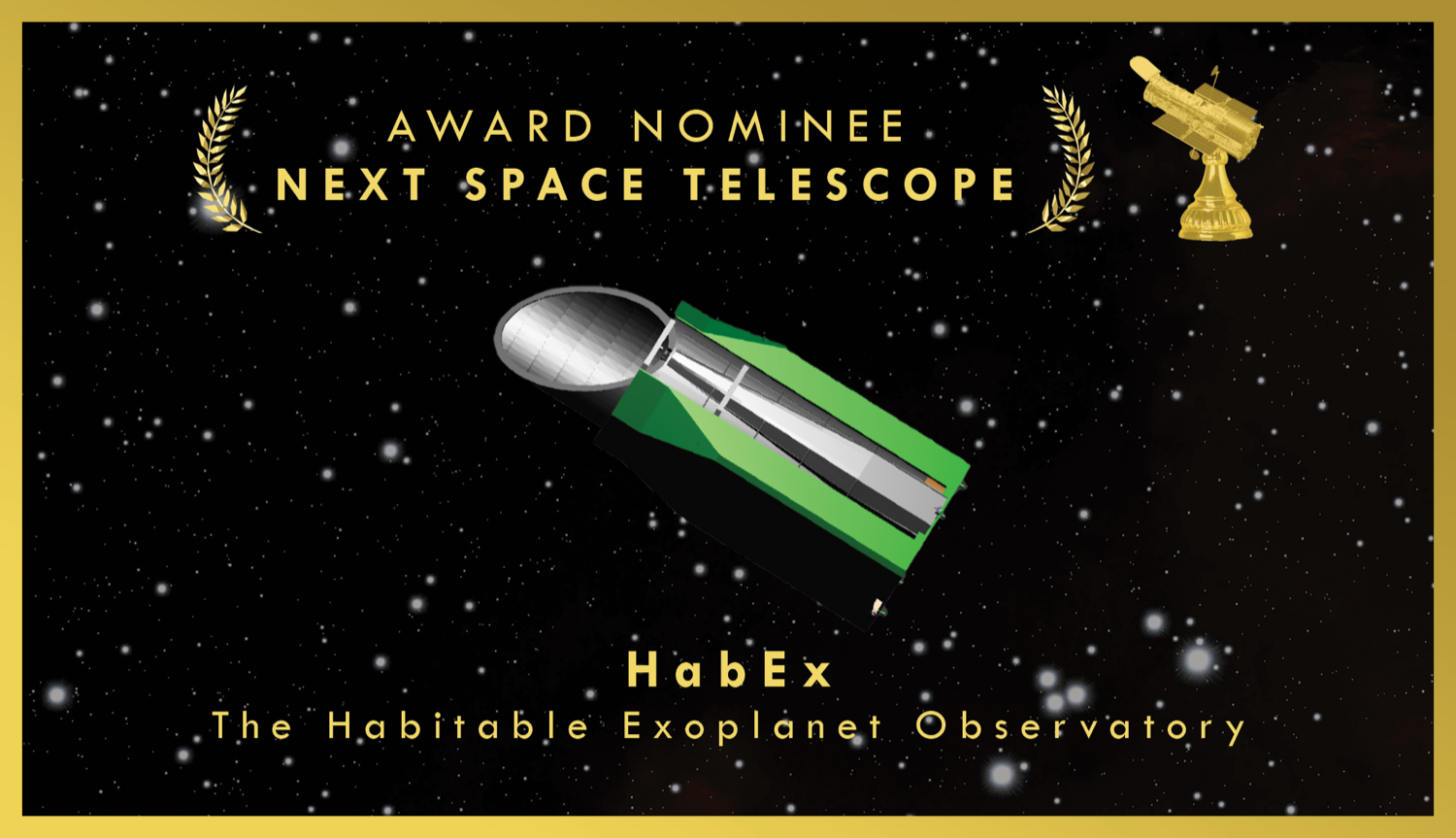
What is it?
HabEx, short for the Habitable Exoplanet Observatory, would be a four-meter long, stable telescope operating in ultraviolet, optical, and very near-infrared photons--think Hubble, but over 10 times larger in area. One of HabEx’s proposed instruments, the starshade, would be deployed from the telescope, physically blocking the light from a sun-like star to bring any orbiting exoplanets into view.

What would it observe?
The primary mission for the observatory is to find and directly image habitable, Earth-like exoplanets. Its instruments would be looking for conditions that could support life, such as signs of liquid water, oxygen, ozone, and other biosignatures. It is one of two candidates for the 2020 Astrophysics Decadal Survey designed to search for Earth-like exoplanets.
What does the team have to say?
“It really is trying to answer this age-old question that’s been around for centuries if not millennia,” says Scott Gaudi, community chair for HabEx. “The idea that now within our lifetime we might be able to do this—think how life changing that would be. Think of how society changing that would be, how humanity changing that would be, knowing that life originated on another planet other than our own… I think as human beings we’re searching for meaning and if we knew that life originated somewhere else, somehow that would give us a little bit more meaning.”

NASA Marshall Space Flight Center
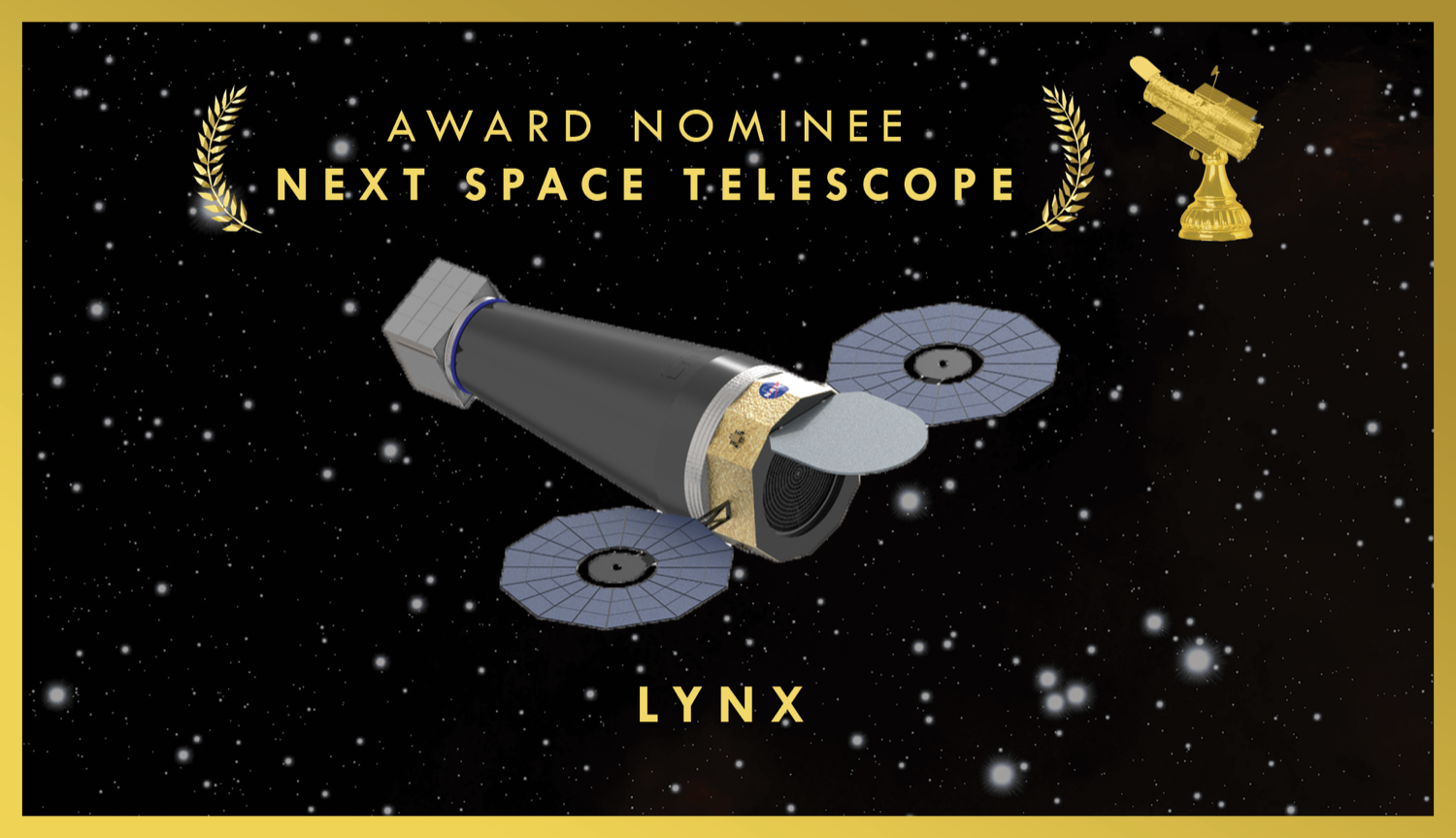
What is it?
Named after a sharp-eyed feline, Lynx would be an X-ray telescope similar to the currently active Chandra X-ray Observatory, which detects heat from exploded stars, galaxy clusters, and matter surrounding black holes.

What would it observe?
The next-generation, large-area telescope would observe and better understand the origins of black holes, the drivers of galaxy formation, and the evolution of stars. It’s high angular resolution and X-ray abilities would visualize matter and high-energy emissions in the universe that would be otherwise invisible.
What does the team have to say?
“It would be by far the most powerful X-ray observatory ever flown by orders of magnitude, across multiple dimensions,” says Grant Tremblay, a team member of the Lynx study. “It would do science from the poles of Jupiter to black holes at the edge of time and everything in between.”
NASA Goddard Space Flight Center
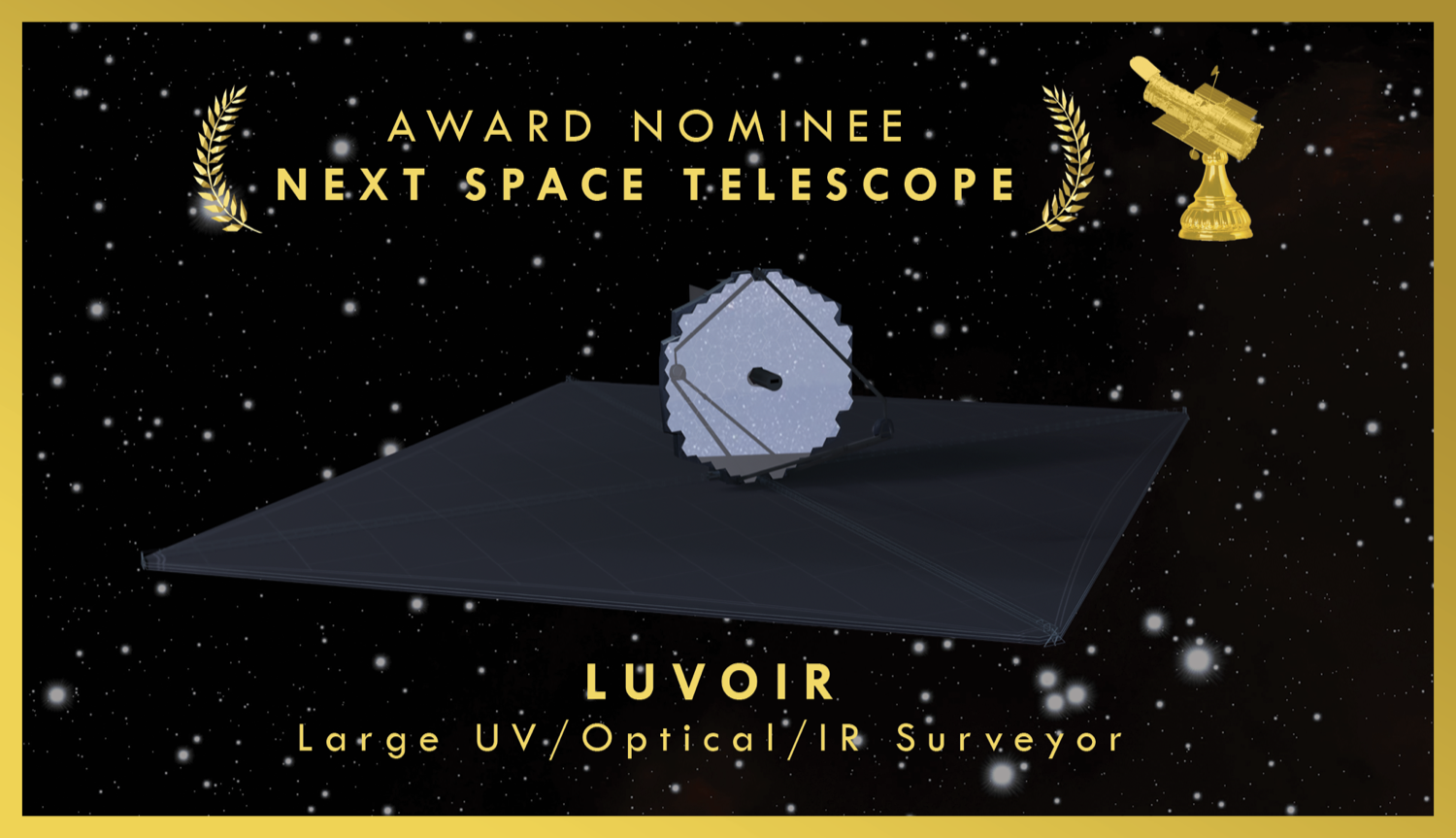
What is it?
LUVOIR would be a “super, duper, duper Hubble,” according to study lead Aki Roberge who spoke to SciFri in a previous segment. Hubble’s primary mirror is 2.4 meters in diameter, but the LUVOIR team is currently assessing two different designs: an eight-meter diameter primary mirror and a 15-meter diameter mirror. The larger the mirror, the more sensitive and detailed the telescope.
What would it observe?
LUVOIR would aim to answer questions like how galaxies assemble, how stars form, and if life can be found beyond our planet. Like HabEx, one of LUVOIR’s main scientific goals would be to study rocky, Earth-size exoplanets found orbiting the habitable zones around Sun-like stars. The powerful telescope would be able to directly image these exoplanets and characterize them—identifying whether they have water, oxygen, carbon dioxide, or other signs of life. If either LUVOIR or Habex are chosen in the decadal survey, it will be the first time researchers will ever directly observe an Earth-like exoplanet.
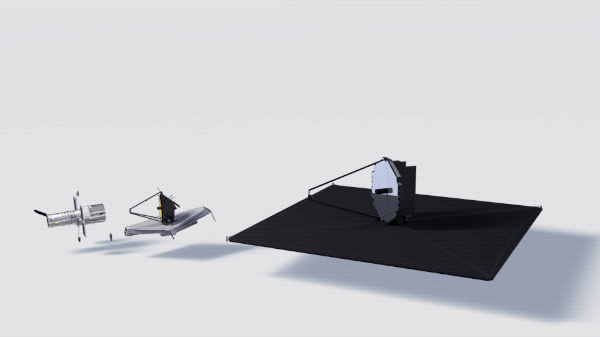
What does the team have to say?
When the Hubble Space Telescope imaged the Hubble Ultra Deep Field, it took more than a week long and over 100 hours of exposure, explains John O’Meara, the cosmic origins science lead for LUVOIR. “That image will be done in 47 minutes with LUVOIR. And so we can truly take it to the next level, find the furthest and farthest things out there in the universe, and see how galaxies really are forming—little Lego blocks of galaxies stitching together to form galaxies that then become galaxies like our own Milky Way.”
If LUVOIR had a theme song what would it be?
“The 1812 Overture,” says O’Meara.
NASA’s Goddard Space Flight Center
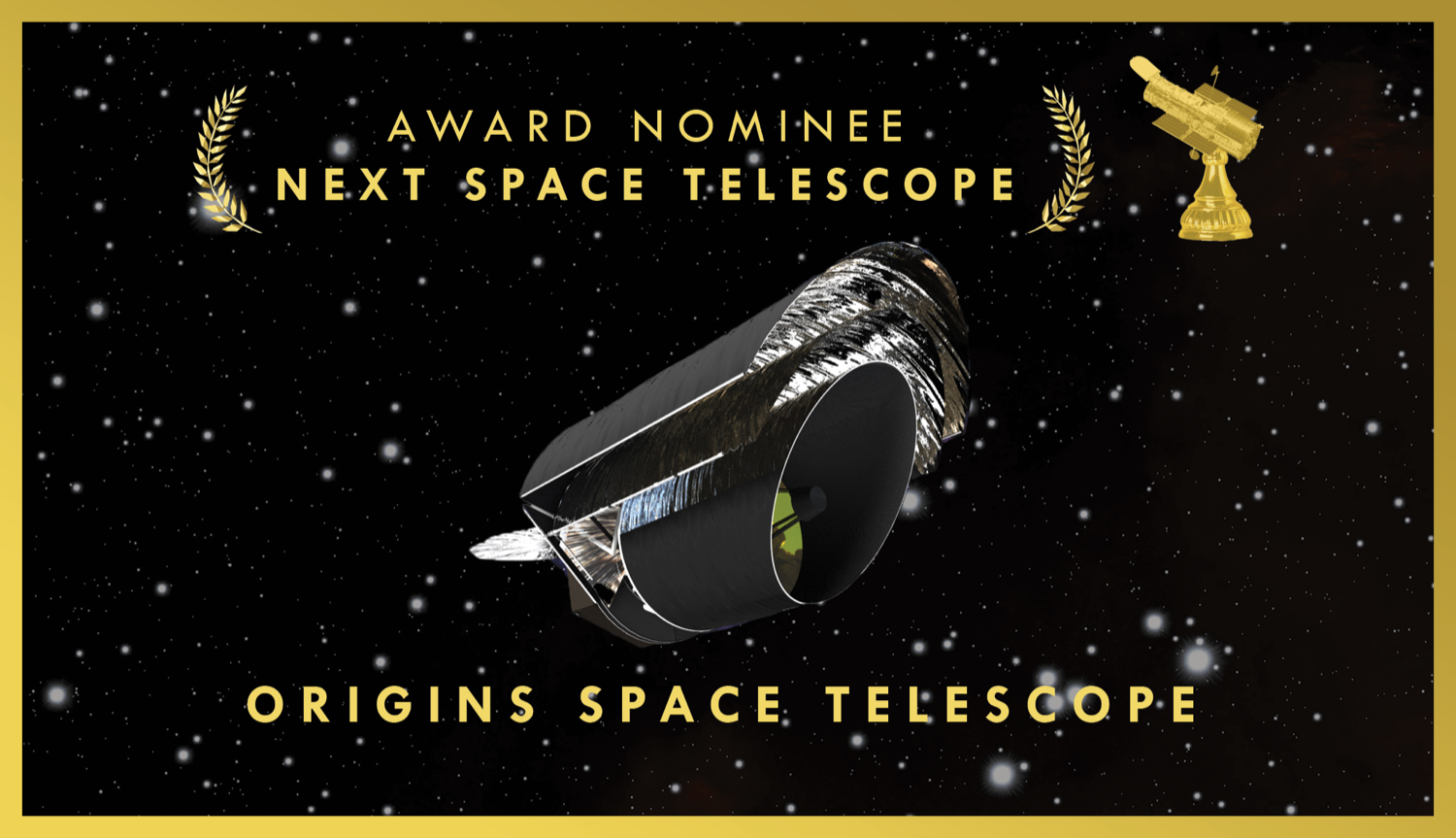
What is it?
The Origins Space Telescope (OST) would be an infrared telescope. With an improved 5.9-meter diameter mirror, Origins would be two to four order of magnitude more sensitive than the European Space Agency’s former Herschel Observatory—allowing it to map out the universe one billion times as fast.
What would it observe?
Origins would search for the origins of galaxies and planets. It would also look for exoplanets spinning around cooler dwarf stars, and visualize deep reaches of the universe that are too cold and faint to detect with other parts of the electromagnetic spectrum. The infrared telescope will also help collect information about how water is transported and formed in young planets, to try to better understand how planets like Earth form.
What does the team have to say?
“Just imagine that. One billion,” says, Johannes Staguhn, principal scientist at Johns Hopkins University and on the Origins Space Telescope team. In about two snaps of your fingers, “Origins has obtained that much mapping capability on the sky as Herschel has done during the entire mission, which was a few years. And that is how big a billion is.”
Correction 2/22/19: A previous version of this page cited measurements from an older concept of the Origins Space Telescope. The most recent proposal as of 2/22/19 features a 5.9-meter diameter mirror, not 9.1 meters. We regret the error.
Donate To Science Friday
Make your gift today. Invest in quality science journalism by making a donation to Science Friday.
Bagikan Berita Ini














0 Response to "Now Presenting The Nominees For The Next Space Telescope - Science Friday"
Post a Comment